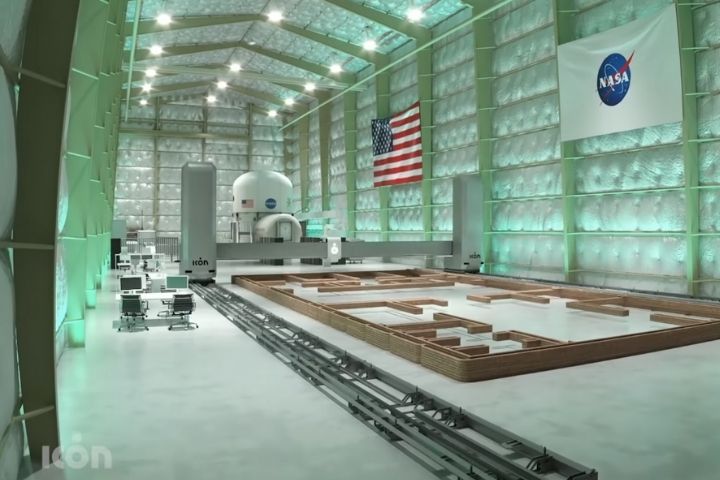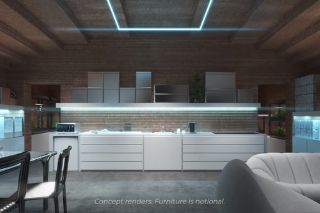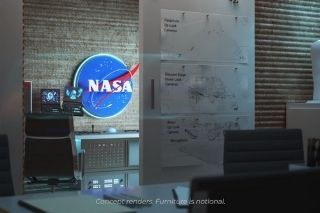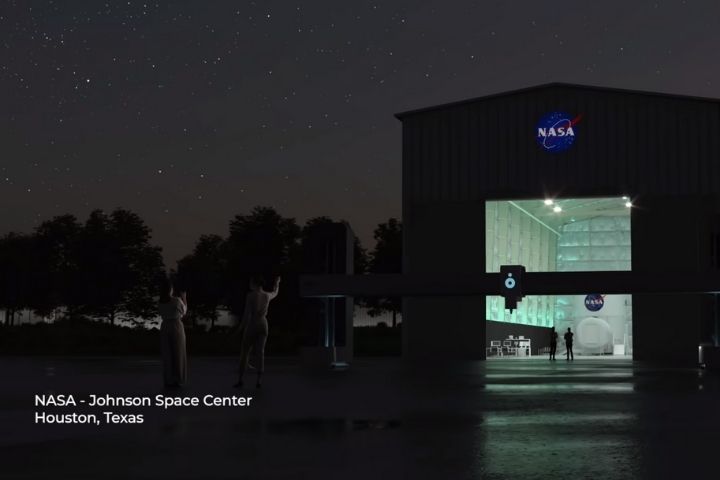3D Printed house by ICON for NASA designed by BIG

3D printer by ICON has been selected to design 3D printed housing to support NASA’s Mars missions. ICON has posted an amazing video of its 3D printing in action.
The space agency has granted ICON, a developer of advanced building technologies, a subcontract to print Mars Dune Alpha for the Johnson Space Center, which was designed by world-renowned architecture firm BIG-Bjarke Ingels Group.
The Austin-based business, which is best known for delivering the first allowed 3D-printed home in the United States in 2018, unveiled breathtaking video representations of the completed modules earlier this week.
NASA’s Mars surface simulation project called as Mars Dune Alpha
NASA announced on last Friday that it is looking for ‘highly motivated individuals’ to take part in a year-long Mars surface simulation, in which they will live in a 1,700-square-foot module. NASA is planning to send humans to Mars by the year 2037.
The module will recreate a realistic Mars home to support long-duration, exploration-class space missions, according to an ICON press statement.
The co-founder & CEO of ICON, Jason Ballard called the Mars Dune Alpha the ‘highest-fidelity simulated habitat ever constructed by humans.’
He further said that Mars Dune Alpha is planned to serve a very precise purpose, which is to prepare humans to live on the red planet. They wanted to develop the most reliable analog as much as possible to assist in humanity’s dream to expand into the distant space.
He also said that 3D printing the home has further demonstrated to them that huge construction 3D printing is a vital tool for humans to go to the Moon and Mars to stay.
3D printer by ICON named as Vulcan, designed to print homes

The 3D printer by ICON named as Vulcan is the company’s large construction 3D printer, Vulcan, will be used to construct the module. Vulcan, which is 46.5 feet wide, can print structures using Lavacrete, a cement-based building material up to 3,000 square feet in size
The unique concrete, according to the business, can survive extreme weather and ‘significantly lessen the impact of natural calamities.’

According to the company’s website, the Vulcan produces one-inch tall and two-inch broad print beads at a pace of 5-10 inches per second. However, it was not immediately known how long the NASA module will take to build.
NASA’s Mars Dune Alpha designed by BIG

On one end of the habitat, the module holds four individual crew quarters. There are dedicated workspaces, medical stations, and food-growing stations on the other end of the spectrum. In the middle, there are some common living spaces.
According to ICON, the rooms include different ceiling heights and other structural elements ‘to reduce spatial monotony and crew member fatigue.’

Crew members will be able to reorganize a combination of fixed and moveable furniture to suit their needs and tastes, as well as customize lighting, temperature, and sound control.
The module’s creators anticipate that these designs will aid in regulating the crew’s “daily routine, circadian rhythm, and overall well-being.”
BIG’s founder and creative director, Bjarke Ingels, said in a statement that the company intends to examine what humanity’s home on another planet will entail from the human perspective in collaboration with NASA and ICON.
Ingels said that the information acquired from this habitat research will directly affect NASA’s long-duration exploration mission standards, and as a result, it may set the groundwork for a new Martian vernacular. Mars Dune Alpha will bring us one step closer to being a multi-planetary race.
CHAPEA
The module is being developed for the Crew Health and Performance Exploration Analog missions (CHAPEA).
The CHAPEA missions feature three one-year Mars surface simulations, the first of which will begin in 2022 at NASA’s Johnson Space Center. Four crew members will be entirely isolated in the imitation Mars homes for the entire 365 days.
NASA says that the analogs will assist in research to develop measures and technology to avoid and resolve possible complications on future human space missions to the Moon and Mars.
‘The habitat will model the obstacles of a Mars mission, including resource constraints, equipment failure, communication delays, and other environmental stressors,’ NASA explained.
Simulated spacewalks, scientific study, the utilization of virtual reality & robotic controls, and exchanging communications are all possible crew responsibilities. The findings will provide crucial scientific information for validating systems and developing solutions.’
- Also read about : Steve Wozniak, co-founder of Apple, defends the right to repair, arguing that the company was established on open source.
- Also read about : In 2021 Tesla Model 3 reclaims safety confirmations
- Also read about : AI can design microchips better and faster than humans, according to Google researchers.
- Also read about : All you need to know about Cartesi crypto (CTSI)
Who can apply for NASA’s Mars surface simulation project?
NASA is accepting applications for the project from the applicants and will continue to accept until September 12, 2021.
Participants age from 30 to 55, with a master’s degree in a STEM subject, and have a minimum of 2 years of comparable work experience to be considered. Candidates need to complete the NASA long-duration flight astronaut simulation and also vaccinated against COVID-19.
However, they will not be sent to the actual Red Planet when a mission is launched, as that honor is now reserved for highly trained astronauts.
The missions are planned to give useful information into NASA’s space food system, and also the physical & behavioral health and performance outcomes for future space missions.
Workstations, medical facilities, and a place to grow food will be included in the habitats, which will be built at NASA’s Johnson Space Center in Houston, Texas.
The space agency will also utilize data from the Mars Dune Alpha simulations to help determine risk and resource required for the future missions in Mars, when astronauts will live and operate there for extended periods of time.
A lead scientist for NASA’s Advanced Food Technology research group, Grace Douglas, said that this is a rare and unique opportunity. The analog is essential for evaluating alternatives to address the complicated requirements of life on the Mars surface.
The chosen applicants will play a pivotal role in preparing humanity for the next great interstellar leap.
Construction in space
ICON has won NASA funding and launched Project Olympus, a collaboration with BIG, to begin research and development of a space-based construction technology to assist future Moon exploration.
With the third of NASA’s Artemis missions, which are fittingly called as the sister missions to the Apollo program that first sent humans to the Moon, the space agency intends to return humans to the Moon by 2024.
Meanwhile, at the Mohammed bin Rashid Space Center in Dubai, BIG is working on a prototype for Mars Science City, which will test construction technologies for potential Mars habitation.
This idea calls for the construction of inflatable domes on Mars’ surface before robots excavate and extract water and transform Martian sand into 3-D printed houses beneath the domes to establish linked biospheres capable of supporting human life.
Please watch the video, To witness this amazing technology







Hey great blog! Does running a blog such as this
require a massive amount work? I’ve absolutely
no expertise in programming but I was hoping to start my own blog
in the near future. Anyhow, should you have any suggestions or tips for
new blog owners please share. I know this is off subject nevertheless I simply had to ask.
Thanks!
Hello, I enjoy reading through your post. I wanted to write
a little comment to support you.